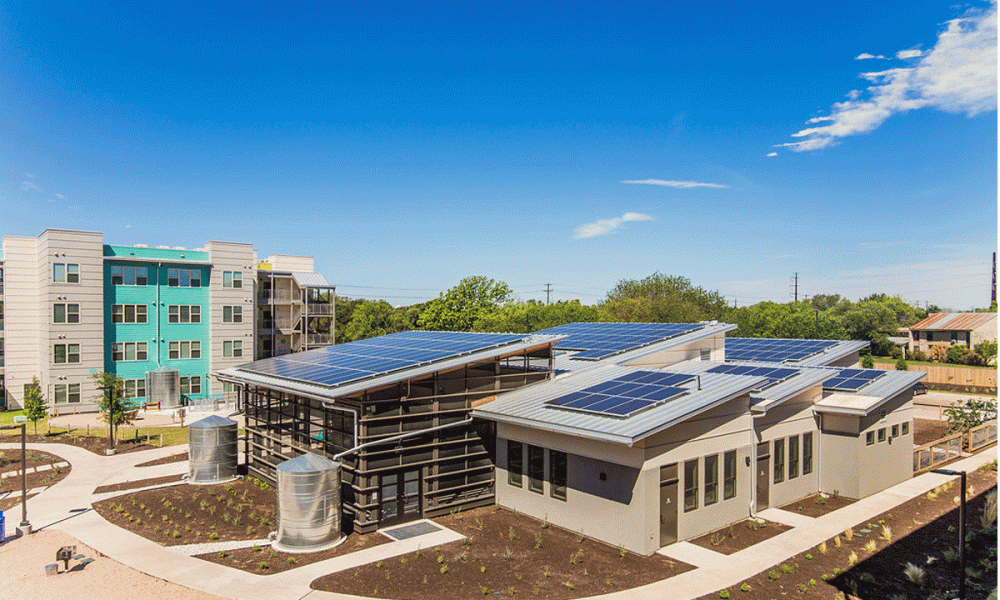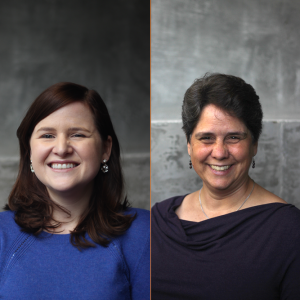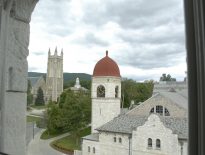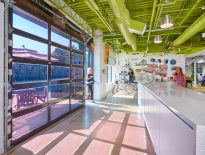Editor’s Note: The Affordable Housing Pilot Program at the International Living Future Institute, made possible with initial funding by the Kresge Foundation and current and ongoing funding by the JPB Foundation, includes the development of industry-specific resources, such as The Living Building Challenge Framework for Affordable Housing, as well as working with pilot projects that are registered under the Living Building Challenge. Because the affordable housing industry faces unique challenges and offers the opportunity to significantly address equity and quality of life issues, ILFI is actively working to help facilitate a pathway to living affordable housing. See our newly updated webpage to find all the current resources and information on each pilot project. We will follow this article with a 5-part blog series throughout 2019 that will highlight issues and strategies in affordable housing and sustainability.
Why we need affordable housing
After this year of bleak climate reports and unprecedented wildfires, the need for a regenerative built environment has never been clearer. The need for affordable housing is similarly clear and dire. At least ten cities and the entire state of Hawaii have for years been in a formally declared State of Emergency over homelessness and affordable housing, yet rates of homelessness continue to trend upward in many cities. For example, Seattle saw a 15% increase in unsheltered individuals in 2018, while overall homelessness in California increased 14%.
Compounding the issue of affordability, low-income households routinely have far higher utility cost burdens than moderate and high-income households. The issue is not only a matter of income; affordable units tend to be older and less energy-efficient, meaning that low-income households pay more for utilities on a square foot basis – up to twice as much as median-income households and three times as much as high-income households. One of ILFI’s new affordable housing pilot projects is located in the Gila River Indian Community in Arizona, where nearly 50% of the community lives below the federal poverty line and residents face utility bills of up to $600 per month. Nationwide one in five families miss utility payments each year, 70% of which have their utilities shut off. Researchers in Milwaukee even found that eviction rates tracked seasonally with utility bills.
While water costs are relatively low in most cities, they are steadily rising, with one study indicating that water costs are projected to increase by 41% over the next few years, largely due to deferred maintenance needed on centralized water systems throughout the country. A preview of this has played out in Detroit where more than 100,000 homes since 2014 (10-20% of all residences each year) have had their water shut off, a practice which the UN has called an “international human rights violation.” Local researchers have linked the shut-offs with an increased incidence of skin and soft tissue diseases. The shut-offs have resulted in additional turmoil in communities as Child Protective Services has removed children from homes when the resident was unable to restore running water within 72 hours.
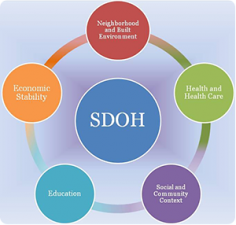
As we spend more than 90% of our time indoors, the built environment has a significant impact on our health and wellness. Neighborhood and built environment are one of five social determinants of health defined by the CDC (along with education, health care, economic stability, and community), which together account for 80-90% of modifiable contributing factors to health outcomes. (Medical interventions are responsible for just 10-20%.) For the 43 million people living below the poverty line in the United States, the built environment has for too long had a deleterious effect on health. Low-income households are more likely to live near freeways and industrial sites and less likely to live near a recreational area or healthy food options. They are also more likely to have been exposed to mold, mildew, pest infestations, and lead-based paint in their homes. The CDC has estimated that 1.1 million low-income homes with children under age six (the age most sensitive to the effects of lead poisoning) have significant lead-based paint hazards. As a result of all of these factors, low-income families have substantially higher rates compared to families at other income levels of diseases such as asthma, allergies, and obesity, as well as significantly lower life spans.
History of ILFI’s Affordable Housing Pilot Program
The mission of the International Living Future Institute (ILFI) is to create a future that is ecologically restorative, socially just, and culturally rich. One key aspect to achieving this mission is ensuring that everyone benefits from and can live, work, learn, and play in Living Buildings and Communities. With this in mind and heart, in 2013 ILFI initiated an Affordable Housing Pilot Program. Over the last five years, there have been three major phases to the program. Phase One, funded by the Kresge Foundation, included collaboration with three affordable housing projects (The Rose in Minneapolis, MN; South Second Street Studios in San Jose, CA; and Capital Studios in Austin, TX) and the formation of The Innovator’s Network, a diverse group of sustainability-minded professionals engaged in affordable housing. The lessons learned from this work were published in 2014 in “The Framework for Affordable Housing.”
In 2015, with funding from the JPB Foundation, ILFI launched Phase Two of the program by expanding the pilot program to eight more affordable housing teams working on ten Living Building Challenge projects across the country. These projects are showing that Living Affordable Housing is possible and produces critical benefits to residents, communities, and the environment. One of these projects, Lakeline Learning Center in Austin, Texas, became Zero Energy Certified in October. Not just focused on energy performance, Lakeline Learning Center is designed so that 95% of water needs are met with harvested rainwater and HVAC condensate. The project also utilized salvaged wood and a “structure as finish” design aesthetic to pare down the materials palette in order to install a nearly 100% Red-List Free interior.
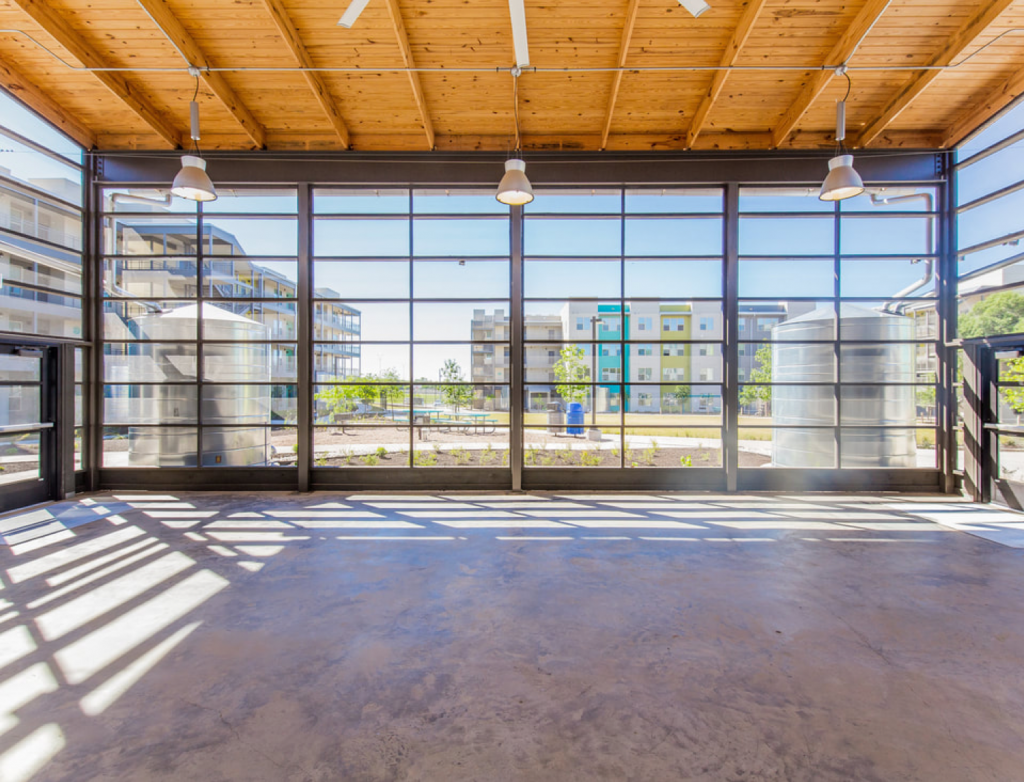
Three other projects from this group are occupied and in a performance period: Cedar Springs in La Verne, California; Silver Star in Los Angeles; and Muldoon Gardens in Anchorage. In addition to targeting the Energy Petal, Cedar Springs and Silver Star both installed greywater reuse systems that save an aggregated 1.5 million gallons of water per year. Muldoon Gardens also pursued a pared-down materials palette and is anticipating achieving Materials Petal Certification. Using indigenous Alaskan design principles, the project reduced the Energy Use Intensity (EUI) from the Anchorage average of 115
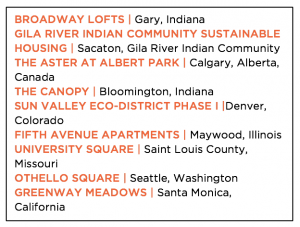
With continued funding from the JPB Foundation, Phase Three of this work began in Summer 2017. This phase includes an expansion of the number of pilot projects, as well as work to develop a buyer’s club, handprinting program, materials vetting tools to make healthy materials more readily available to all affordable housing
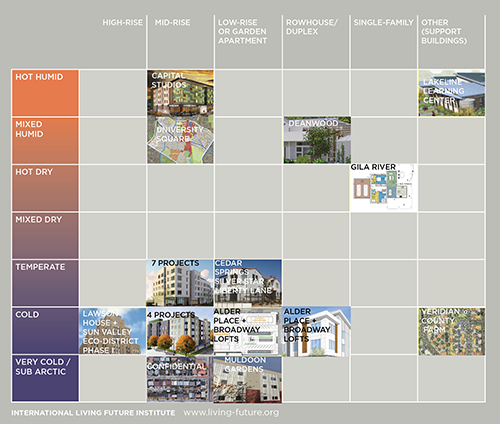
The twenty-five pilot projects from all three phases are located around the country in a variety of climate zones. They represent different building types from high-rise SRO apartments to townhomes, project sizes from six units to 400 units, and resident populations including multi-generational families, previously homeless, veterans with special needs, youths transitioning out of foster care, and immigrants. It should be noted that all of the projects within ILFI’s pilot program are or will be affordable as defined by Housing and Urban Development (HUD). While a handful incorporate market-rate units, the vast majority of units are restricted for rental by those making less than 60% of area median income (AMI) and ownership for those making less than 80% AMI. More information about the projects from each group can be found here. While these projects vary in scale and typology, they share a goal to create long-term stability and increased opportunities by providing housing that is affordable, healthy, and sustainable. For these compassionate and forward-thinking project teams, sustainability and affordability go hand in hand to form a more holistic approach for housing with lasting benefits for the people they serve. A glimpse into a few of these projects helps illustrate why and how these projects are creating Living Affordable Housing.
The future of affordable housing
Alder Place in East Chicago, Indiana, and Broadway Lofts in Gary, Indiana, are within seven miles of each other and 25 miles of Chicago. The siting of these projects is very deliberate, providing critically-needed healthy and safe housing in an area plagued with health and environmental concerns. The West Calumet Housing Complex that used to be located in this area was evacuated and demolished in 2017 after the EPA found significant lead and arsenic contamination in the soil and declared it a Superfund site. The 1,000 residents living in the buildings, who had been exposed to these dangerous substances for years, were then faced with the choice of leaving their community altogether or trying to find a scarce affordable unit in the area, many of which also had significant environmental toxins. The Alder Place and Broadway Lofts projects will provide approximately 80 units of critically needed housing with possible additional single-family and townhouse units dispersed throughout the community. Because these projects are a part of ILFI’s pilot program and the Moving Forward program run by the Indiana Housing and Community Development Authority and Energy Systems Network, future residents will be provided with net-positive energy homes with diverse mobility options. These developments will also be designed with a focus on health and wellness, with the intent to increase quality of life and decrease cost of living for low and moderate income individuals and families in Indiana.
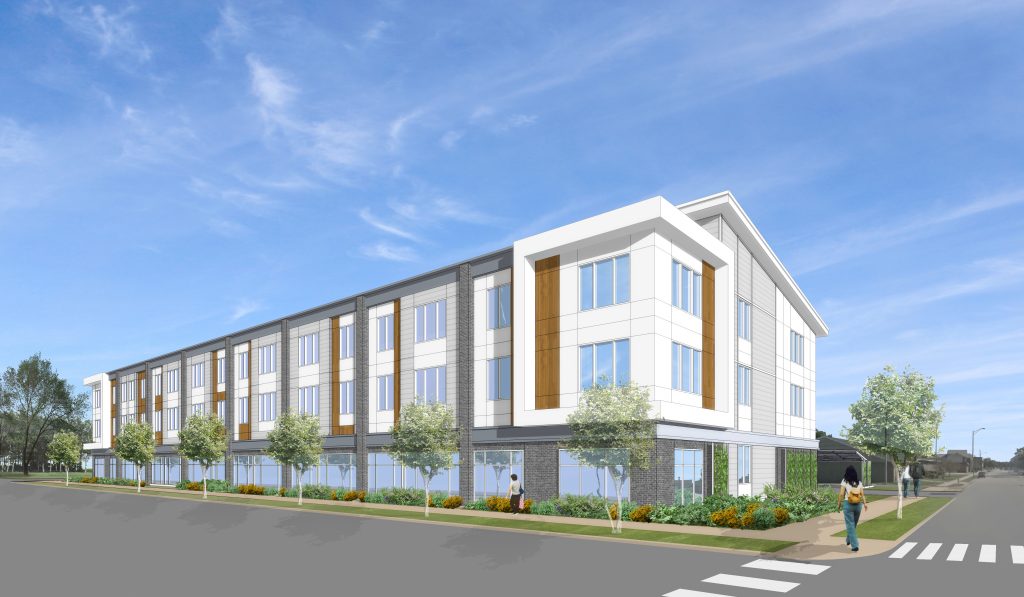
While the indigenous peoples of the Gila River Indian Community thrived in the Sonoran Desert area of what is now Arizona for much of their history, in recent decades the community has been plagued with extremely high utility bills and poverty levels. Housing built for tribal members by HUD ignored practical, contextual design solutions the tribes had developed to live in harmony with their harsh climate for thousands of years. Using the Living Building Challenge as a framework, the Gila River Indian Community Sustainable Housing Project is a collaboration between the tribal members and Arizona State University students. This collaborative design process is part of a nationwide movement to reestablish tribal sovereignty by enabling members to reclaim ownership over the design and construction processes within their own communities. The Gila River project is exploring Living Certification using indigenous building materials and methods suited to the climate and culture, such as
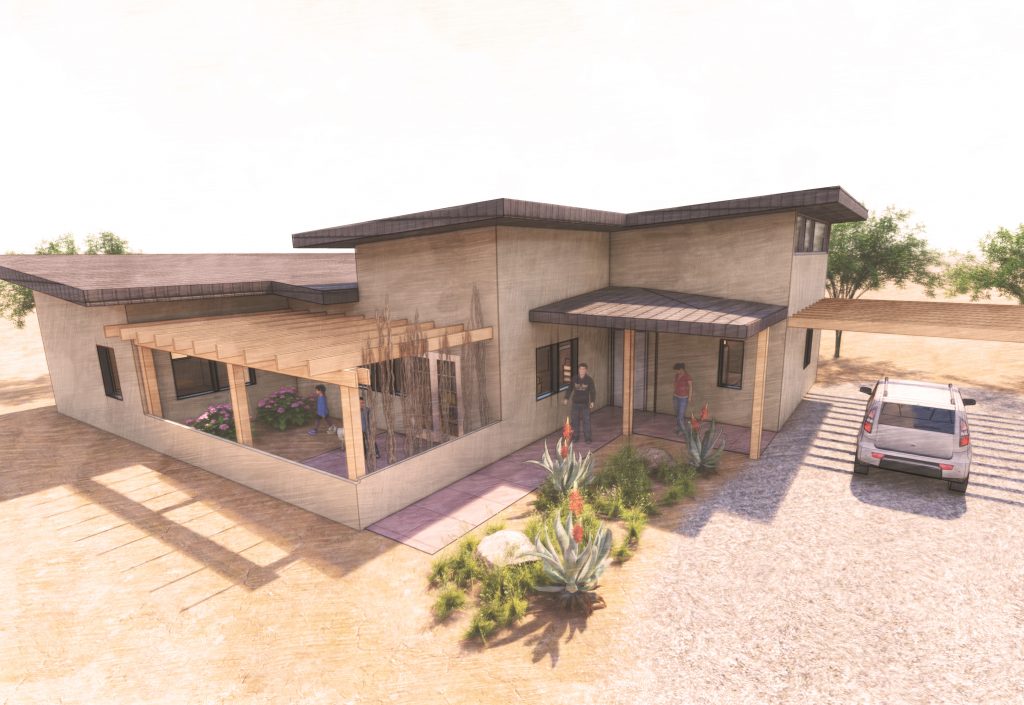
At five stories, Othello Square is located in an urban context in Seattle and is denser than the other projects mentioned above. The Developer, Homesight, has a mission to provide low-income homeownership opportunities in a city where housing costs are 8 times the national average and that
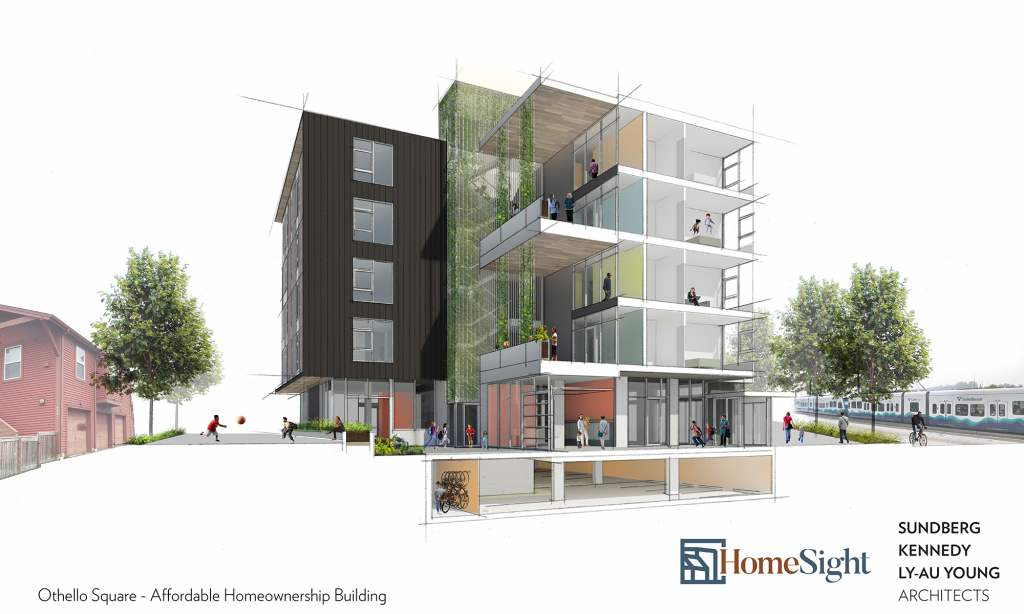
courtesy of Sundberg Kennedy Ly Au Young Architects
ILFI is also developing a Handprinting in Affordable Housing Portal to facilitate collaboration between the materials manufacturing industry and affordable housing projects. The Handprinting Imperative within the Living Product Challenge calls on manufacturers to not only mitigate negative impacts of their manufacturing process (i.e. the footprint), but also to leave a positive imprint on the world (i.e. the handprint). In order to become net positive, manufacturers need to create water, energy or climate savings that are greater than the annual amount needed to manufacture the product. One way this can be achieved is by donating either money or products to affordable housing projects. For example, the donation of lighting fixtures to an affordable housing project could free up funds in the budget that allows for lower-flow plumbing fixtures or photovoltaic panels. There is a natural synergy between these two different ILFI programs that we are excited to begin to explore. Manufacturers pursuing the Living Product Challenge are seeking to leave a positive impact on the world, while (mostly non-profit) affordable housing developers (particularly ILFI’s pilot projects registered under the Living Building Challenge) are aiming to construct the most durable, healthy and sustainable buildings possible, yet operating with a constrained budget. While we are pioneering the idea of handprinting in affordable housing between manufacturers and affordable housing projects right now, we are also building a portal on our website that will allow manufacturers seeking handprinting opportunities to easily search among registered affordable housing projects.
A key goal of ILFI’s Affordable Housing Pilot Program is to create resources and tools that can be used broadly by the industry in order to transform the way affordable housing is built. Healthy, sustainable, beautiful, and culturally-relevant homes with low to no utility bills, abundant access to healthy food and nature, proximity to services, and a rich community should be the norm. Through the efforts of mission-driven and innovative affordable housing project teams, as well as the dissemination of information and lessons learned through the tools, resources, and programs created in this pilot program, this vision is coming to life.
